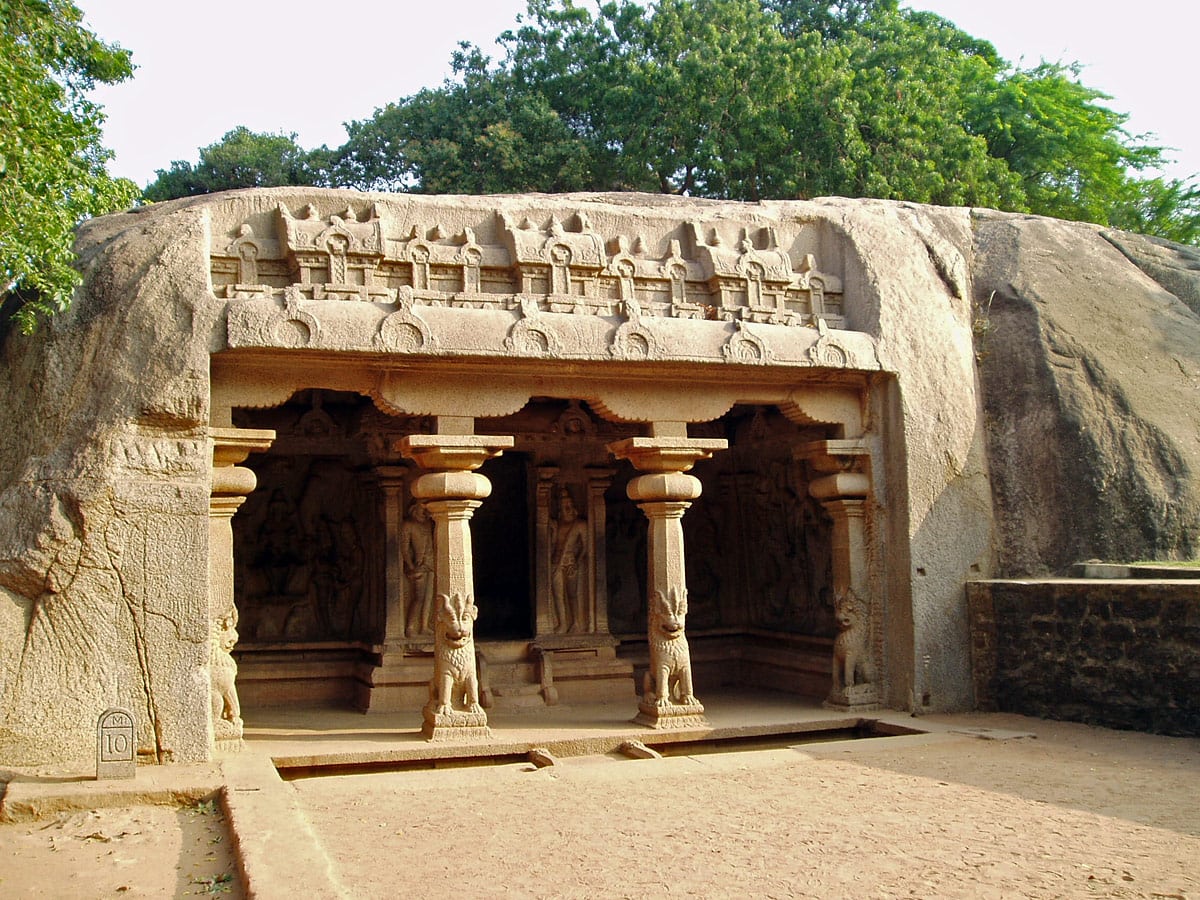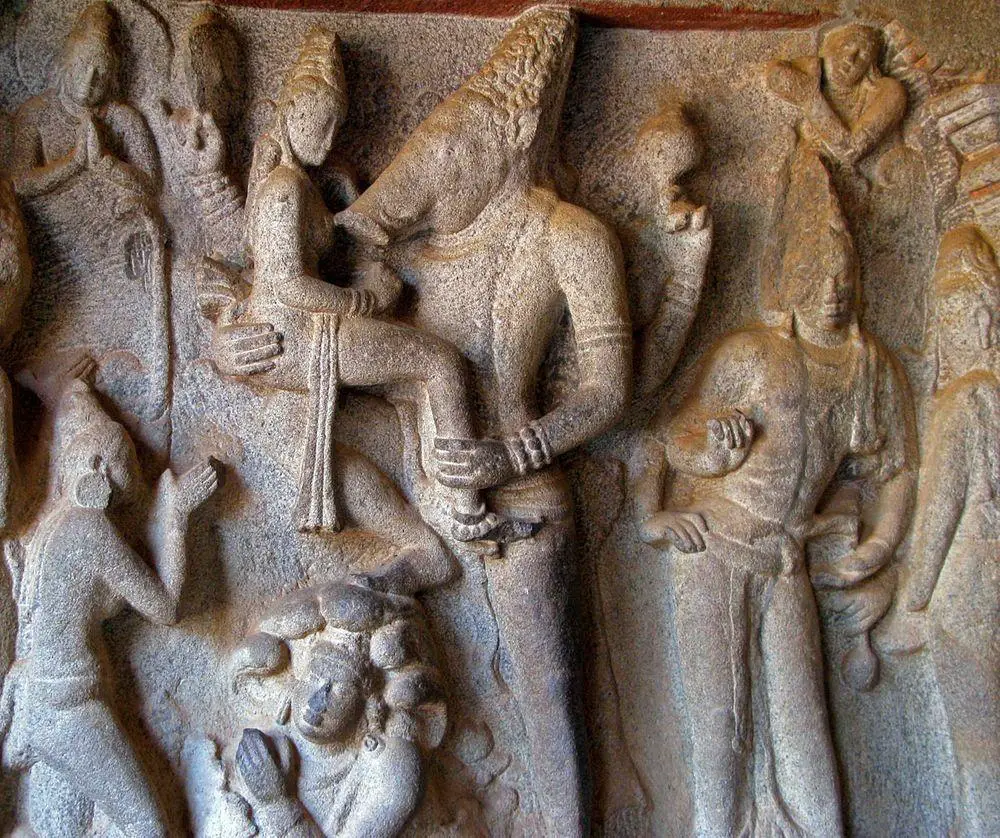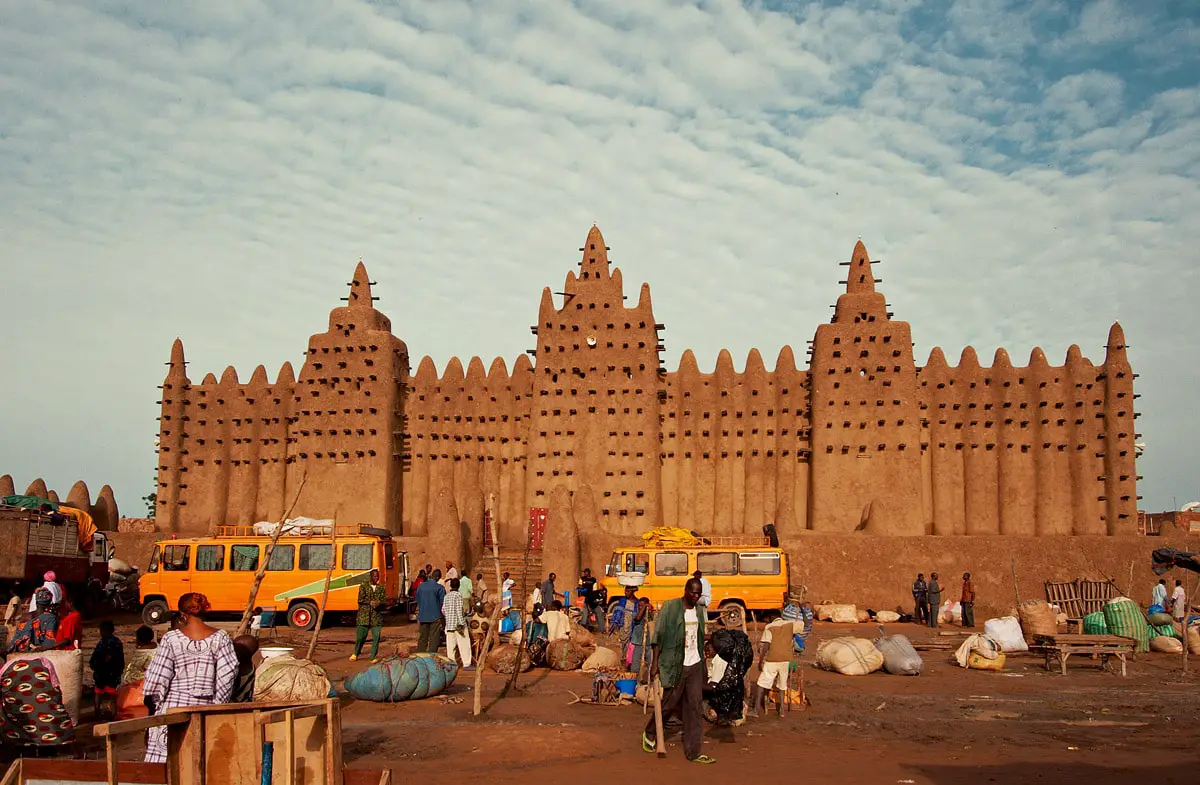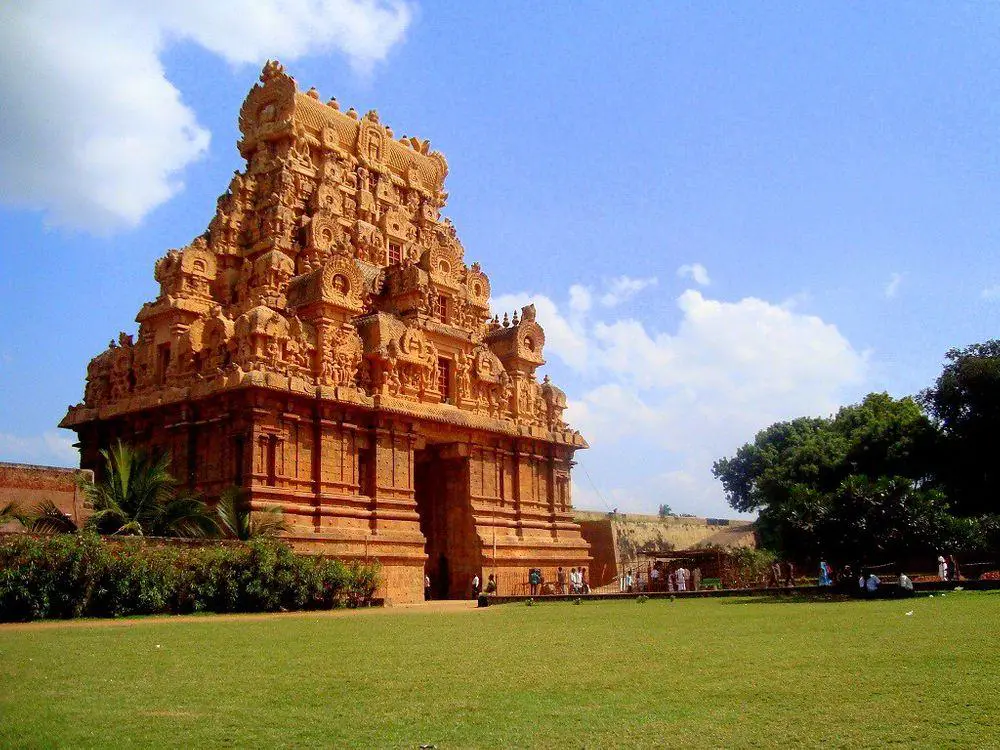World 🢖 Asia 🢖 India 🢖 Tamil Nadu
Hindu shrines 🢔 Religious architecture 🢔 Archaeological wonders 🢔 Categories of wonders
Wonder
Varaha Cave Temple

 In short
In short
Mahabalipuram (ancient name – Mamallapuram) was flourishing port city of Pallava dynasty during the 7th – 9th centuries. In many respects, Mamallapuram was the second capital of Pallavas next to Kanchipuram. This city in the second half of the 7th century experienced an unprecedented flourishing of art and architecture, here were created multiple unique artworks. As far as we can judge now, artisans at Mamallapuram made courageous experiments, using the natural landscape to create striking, unusual monuments.
 71.7%
71.7%
GPS coordinates
Location, address
Age
Religion
UNESCO World Heritage status
Map of the site
If you see this after your page is loaded completely, leafletJS files are missing.
 In detail
In detail
Numerous monuments of architecture and art in Mahabalipuram show gradual movement from rock-cut architecture to structural buildings. Varaha Cave Temple in this sense is one of the most primitive buildings in Mahabalipuram.
But don’t be deceived by the word "primitive" because Varaha Temple is far from being primitive – it is a sophisticated, architecturally rich structure. This small temple is shaped in a low rock outcropping, only a bit higher than the temple itself.

Temple is entered through mandapa – beautiful verandah with two pillars and two semi-columns. All four contain doorkeepers – figures of horned lions at the bases of columns.
Entrance in the hall of the temple is guarded by two gatekeepers.
Side walls inside the temple are adorned with four large sculpted panels. The centerpiece of the northern sculptural group is Varaha – the avatar of Vishnu, similar to wild boar. Varaha holds up his wife Bhūmī – mother earth – he has saved her from Naga, the snake king. The southern sculpted panel shows Vishnu Trivikrama – as a dwarf with one foot on earth, another – in the clouded sky. The third leg is on tyrant Bali, pushing him to the underworld. Next to Vishnu stand Brahma, Shiva, Sun, and the moon. Eastern panel shows goddess Lakshmi with two maidens and two elephants. The fourth panel shows goddess Durga standing on a lotus under the umbrella.
Varaha Cave Temple is one of the greatest examples of Pallava art. It has been created during the reign of Narasimhavarman I Mahamalla (r. c. 630 – 668) and represents an early stage in Dravidian architecture with many elements of Buddhist design prevalent.
References
- Group of Monuments at Mahabalipuram, evaluation of advisory body, 1983.
- Varaha Mandapam, Mahabalipuram – Dream of Stones. Accessed on April 12, 2010.
 Linked articles
Linked articles

Religious architecture
Since ancient times human talents and skills have been expressed in religious architecture and arts, and traditions and rituals have evolved around pilgrimage sites. Religious buildings represent a major part of the highest achievements in architecture and crafts.

Hindu shrines
Hinduism is one of the oldest religions – possibly the oldest one among contemporary religions and Hindu temples belong to the most impressive religious buildings in the world.

Wonders of India
India is the seventh-largest country in the world by area, and, naturally, such a large area contains a huge amount of exciting attractions…
Wondermondo considers that India is the second richest center of architectural heritage in the world after Europe and maybe no single country in the world can match it in this respect.
 Recommended books
Recommended books
Tamil Nadu: The Heart of Dravidian India
The huge temples of Tamil Nadu are justifiably famous. Through history and forty-four original photographs, this book explains how the temples came to be and what their statuary symbolizes. The book also paints a picture of what life was like in the civilizations that built them.
Mahabalipuram (Monumental Legacy)
Constructed in 700 CE by the famous Pallava king Rajasimha, Mahabalipuram is a unique monument where art form combines with religion and legends. Also known as Mamallapuram, it showcases the best of Tamil art and architecture. The beauty of the monument is further enhanced by its location on the shores of the Bay of Bengal, the latter significantly influencing the creations. Part of the prestigious Monumental Legacy series, this book presents a graphic account of the site and its monuments-mandapas (cave temples), rathas (chariots), open-air bas-reliefs, and structural temples.


